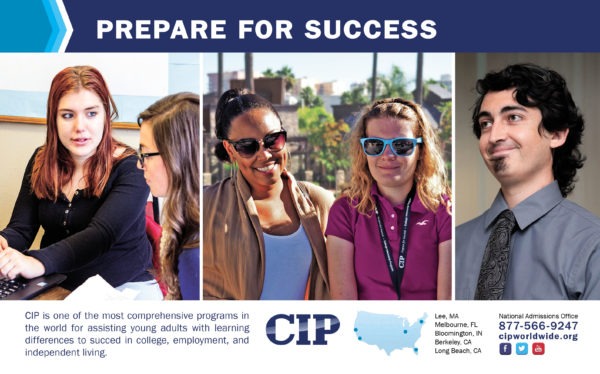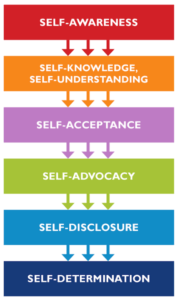Communication is an essential skill that contributes to success with relationships. Individuals with ASD particularly focus on growth in their communicative skills for a majority of their lives. With young adulthood comes the combination of self-identity development and the presentation of more abstract social situations. A common challenge many young adults with ASD experience involves handling these complicated social conflicts that call for higher level processing needs. As a result, advocacy and communication become difficult as interpersonal goals and awareness of social constructs become convoluted. This challenge is well depicted in the following case:

Jolene Liang, Social Skills Coordinator
A student, Tom, brought up a peer conflict he was having with one of his friends. Tom is a 24-year-old college student studying film and has a successful peer group he socializes with regularly. Tom mentioned his challenges with a peer who was making negative comments towards his career pursuits during their social outings. Tom expressed his care for his friend, however he also identified his uncertainty in continuing his friendship due to his peer’s repeated statements, despite Tom’s independent efforts of advocacy. “I’m not really sure what I want to say,” he commented.
These words are relatable to many individuals on the spectrum and indicate roadblocks present in self-awareness, information processing, and therefore impacting adeptness in communication. Thus, a support plan to address these specific barriers is needed. The following are ways to address these common roadblocks.
Three Strategies to Strengthen Communication
1) Self-Reflect – Self-awareness is foundational in order to achieve communicative keystones, such as self-advocacy and disclosure. This construct is well represented in this Continuum of Growth (McManmon, 2016).
Hence, what are the specific obstacles present and how do we coach self-awareness strategies? Elmose (2016) describes self-awareness challenges individuals with ASD experience as involving difficulty differentiating between their own or others’ preferences, difficulty relating their own behaviors according to social contexts, and difficulty identifying their own and others’ thoughts and feelings. These outlined obstacles further define the roadblocks adults with ASD experience in processing social constructs, cues, and pathways for inappropriate behaviors that may be present in social conflicts.

One strategy many companies, organizations, and relationship bloggers use to increase awareness of identity and align standards involves the use of outlining core values. Core values can be defined as a stable, motivational construct or belief that outlines a desirable end (Rohann, 2000). Encouraging individuals with ASD to outline their personal core values can assist in their self-reflection and identify interpersonal goals they strive to achieve in relationships. Outlining interpersonal goals can address self-awareness challenges by bringing to light existing values, morals, and thus reasoning for actions.
In our example, Tom’s barrier in communication involves a lack of self-awareness of his wants and needs in friendship. When asked to identify his 3 core values, Tom identified the importance of having friends who are (1) kind and caring, (2) supportive, and (3) able to resonate with him. From this exercise, Tom can create a construct to which he can utilize in building meaningful and valuable relationships.
2) Identify Boundaries – Core values, or interpersonal goals, directly connect to boundary lines present in relationships. Lue (2010) further outlines that core values act as personal guidelines that identify what is acceptable in relationships. Thus, it is the next step to identify whether behaviors or experiences with others align or conflict with outlined values.
For example, Tom identified his peer’s behaviors as diverging from his core values of (1) kind and caring and (2) supportive, therefore resulting in uncertainty to continue his friendship. Conversely, Tom can utilize his outlined core values to ensure his own behavior aligns with what he values in relationships. If Tom identified that he spoke ill of his peer’s political views prior to the negative statement towards his career pursuits, Tom could be made aware of his violation of the core value (1) kind and caring. Thus, clearly outlining the interaction between relationship goals and boundaries serve as a guideline for individuals with ASD to better process specific behaviors that align or detract from what is deemed valuable in their friendships.

3) Advocate and Disclose – Social conflicts appear more manageable when broken down into clear and specific guidelines based on goals and boundaries. Language models, such as the sandwich method or constructive criticism, can be used in tandem with these findings to advocate more effectively. As mentioned prior, Tom identified his peer’s actions to violate the boundary of his goal of having friends who are kind, caring, and supportive. Verbalizing these outlined core values can apply in self-advocating and disclosing wants or needs within relationships. Hence, Tom constructed how to mention his core values within his advocacy script plan involving constructive phrases like, “I do feel like we connect really well, but I didn’t feel very supported when you said….” and, “I really value having friends who support me, do you feel like I support you?” Consequently, the combination of relationship goals, boundaries, self-advocacy, and self-disclosure contributes to overall effectiveness in communication.
These outlined strategies aim to support students in simplifying complex social conflicts, thus making processing abstract social constructs more manageable. In review, self-reflection is the first step to identifying interpersonal goals that accurately reflect personal values in relationships. Adults with ASD can strengthen their communication by self-reflecting on their core values, outlining their boundaries, and advocating from their findings. Tom often reflects back to his core values to identify if his own actions and activities with his friends align with his goals. From this, Tom reports feeling that he is able to communicate and build relationships more authentically. By communicating in kind, caring, and supportive ways, individuals on the spectrum can attain and develop valuable and meaningful relationships.
Jolene Liang is a Social Skills Coordinator at The College Internship Program (CIP), a national transition program for young adults with autism and learning differences. For information about CIP, visit www.cipworldwide.org.
References
Elmose M. (2016). A conceptual framework for understanding characteristics of self-awareness associated with autism spectrum disorder. Scandinavian Journal of Child and Adolescent Psychiatry and Psychology, 4 (3), 109-114.
Lue, N. (2010). Understanding your core values in relationships: No they’re not your common interests. Retrieved from https://www.baggagereclaim.co.uk/understanding-your-core-values-in-relationships-no-theyre-not-your-common-interests/
McManmon, M. (2016). Autism and learning differences: An active learning teaching toolkit. London, UK: Jessica Kingsley Rohan M. J. (2000). A rose by any name? The values construct. Personality and Social Psychology Review, 4(3), 255-277.






[…] Three Strategies to Strengthen Communication for Adults with Autism and Learning Differences see article […]
[…] Three Strategies to Strengthen Communication for Adults with Autism and Learning Differences […]